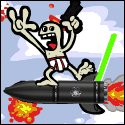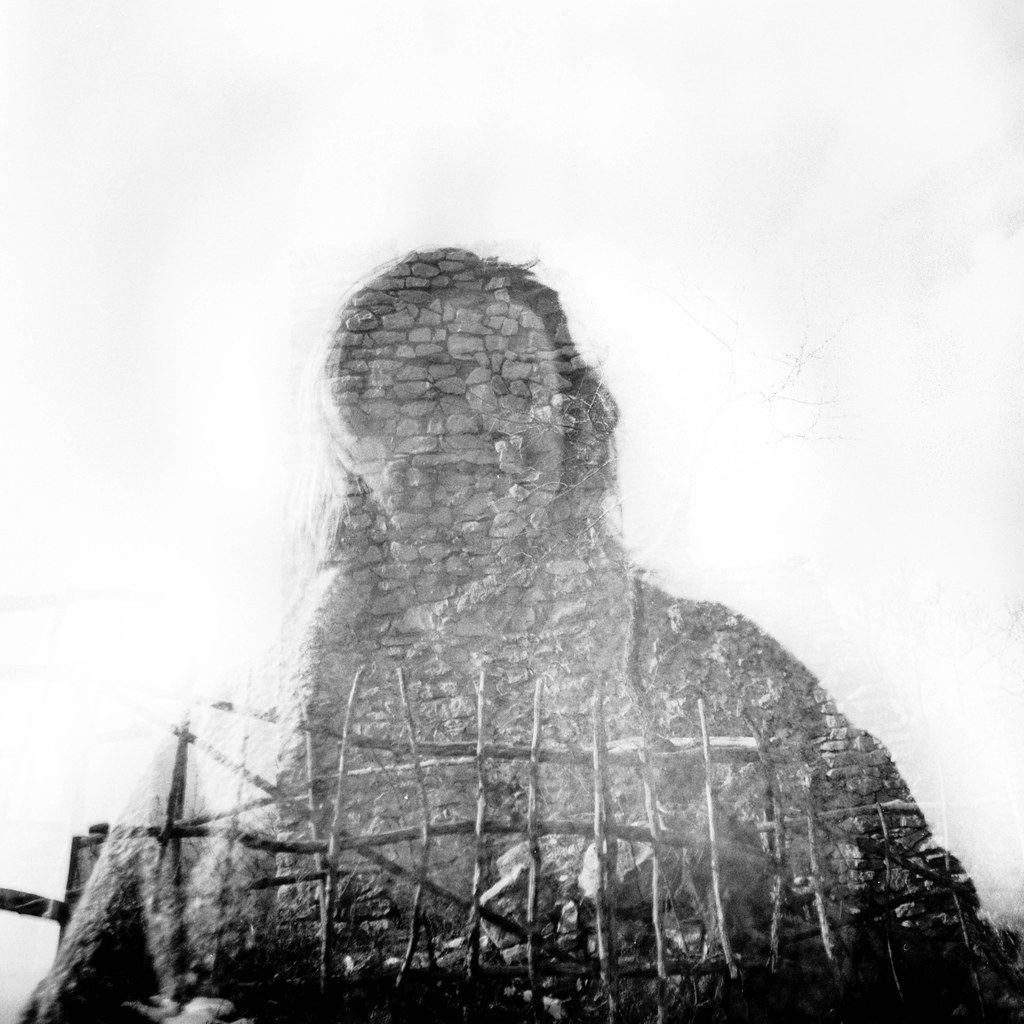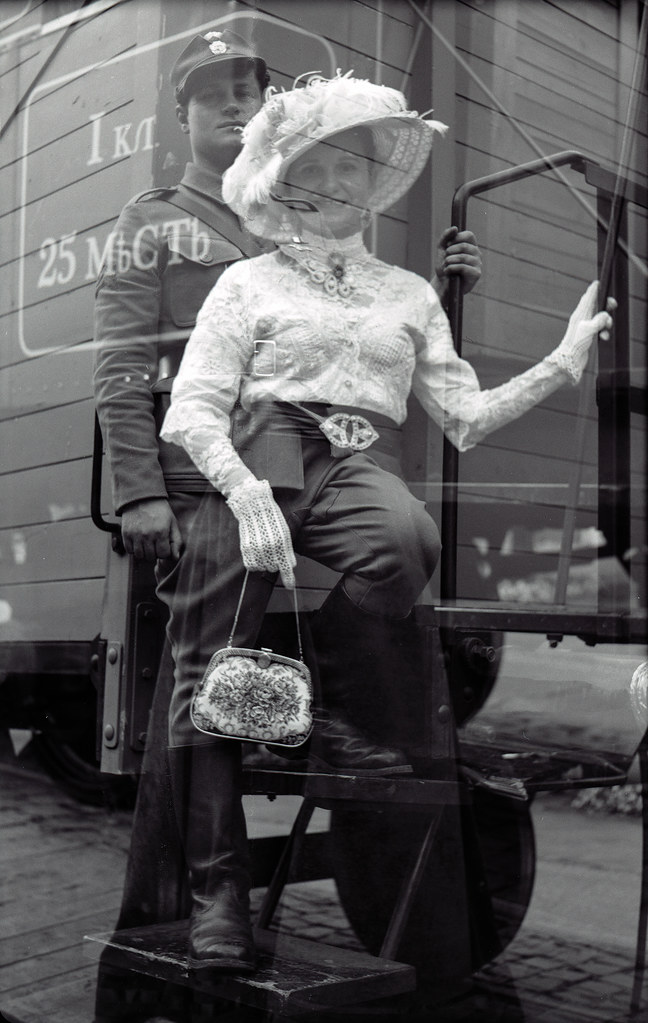|
Film thread, on a whim while waking around a flea market I got a Minolta SRT 100 with a 50mm f1.7 lens. It all appears to be working-ish (other than the light meter which I don't have a battery for yet), but this is my first film camera so on closer inspection I think what I got isn't the best mechanically. Basically the following: - Some dust inside the lens - A bit of a dirty mark on the viewfinder prism inside just above the mirror - Sometimes the mirror stays up after firing the shutter, sometimes it doesn't, looks like the foam material that the mirror stops against is a bit degraded and sticky - At the fastest shutter timing (1/500) can't really see any flash of light with the film door open even with the lens removed in bright light (I can at 1/250) - The timing down at 1 second seems inconsistent and once the shutter just never closed. I'm quite willing to have a go at pulling it apart and cleaning/restoring it, thoughts? My plan is to shoot B&W and I'm happy with a softer vintage look, primarily because my existing digital camera is perfectly fine in terms of razor sharp images and colours and I'd like to have a go at developing the negatives at home.
|
|
|
|

|
| # ¿ Apr 27, 2024 23:05 |
|
Anybody in New Zealand here with recommendations about what B&W film and developer chemicals I can get locally? Looks like I can get Tri-X which seems to come well recommended but the only chemicals locally available are Ilford, not sure what combo would be best for a total beginner.
|
|
|
|
Just ordered a dark bag, Paterson style tank and some measuring cylinders and bottles last night woo. I'm going to try the black yarn thing for replacing the light seals around my film door and get some black self-adhesive foam sheet for the mirror bumper because the pre-cut light seal kits would cost twice as much to ship here as the kit itself costs. Does anybody have any photo-references for various B&W films available and the kind of image they capture and how the developers effect that? I'm kinda feeling like high contrast and grainy.
|
|
|
|
Thanks for the advice, I'll see if I can get Rodinal at all in New Zealand, it would probably be a pain to buy online and ship in (assuming it's dangerous goods). Edit: looks like I can get fomapan 400 and Rodinol easily enough shipped from Australia Blackhawk fucked around with this message at 04:21 on Sep 27, 2018 |
|
|
|
Ordering some Fomadon R09 (rodinal equiv.) and Fomapan 400, also considering some Tri-X to test as well. Suggestions re. exposure and develop settings?
|
|
|
|
Yond Cassius posted:You were going for a gritty, high-contrast kind of look, right? I'd start with exposing at box speed or so, developing at 1:25 for 6 minutes. That's 20 ml Rodinal diluted to 500ml of solution, or equivalent as necessary for your development tank. Agitate it about once every minute. See how you like that, and adjust from there. Rodinal is fairly linear in its development times over most practical ranges, so as SMERSH mentions you can push a stop by adding another 6 minutes to that, or go to 1600 up near 25 minutes to half an hour, depending on exactly what you're looking to do. Thanks for the advice, will give it a go when my stuff starts coming in.
|
|
|
|
Woooo just shot my first roll of film (for about 15 years and not in a lovely point and shoot anyway...). As suggested earlier in the thread, Fomapan400 at box speed and more or less what the lightmeter needle told me to do +/- 1 stop in some cases. I'm going to have my first crack at developing it tomorrow, massive dev chart says Rodinal with Fomapan400 at box speed is 1+25 and 5.5 minutes, however I've read that Fomapan400 at box speed in Rodinal ends up under-developed so I'm not sure if I should be trying anything else instead. I did read somewhere else that 1+50 dilution over 18 to 22 minutes with less agitation (30 sec every 5 mins) works a lot better at EI400...
|
|
|
|
First ever film developed! Shot in a camera that I restored! I'm so excited! Unfrotunately just after rinsing the negatives as I was hanging them up to dry I dropped the whole roll onto a dirty floor and then in a panic I didn't re-rinse them, so there's tons of poo poo stuck to the film and it's basically ruined. Also I don't have a scanner or any way of actually digitising them right now so here's a photo I took of them on a piece of paper with my digital camera and the colours inverted. This was only a test roll that I rushed through in a day to check the camera out (light leaks, bad shutter speeds, inaccurate lightmeter etc) so I'm not too sad that I ruined it, will have to invest in a scanner and some good negative pockets now.  I know the photo is trash because there's no back lighting, it's in a filthy plastic sleeve and I had to really mess with the levels of the photo in lightroom to get it to look reasonable but is there anything that can be taken from these negatives to do with the way I've exposed and developed? Or is there a suggestion for a way I could get some better images to show? I don't have much experience but looking at them it feels like quite a few of the frames are under-exposed (negatives are entirely clear in shadow areas) but I'm not sure if that's because of how I exposed or how I developed. I've seen people say that Fomapan 400 especially when developed with Rodinal is actually more like 200 which could explain an underexposed look. I shot at box speed and developed for 18 mins, 1+50 with short agitation every 5 mins. Blackhawk fucked around with this message at 03:47 on Oct 21, 2018 |
|
|
|
I just checked the lightmeter in the Minolta vs. my Sony A7RII in a few different outdoor scenes and it was more or less spot on, maybe 0.3 stops off at most. I think the milky look is just that I took the photo while the negatives were still in a plastic sleeve and they're slightly above a white sheet of paper so the shadow under the negatives makes them look kinda blurry. I really need to get a film scanner to properly evaluate.
|
|
|
|
I'm going to give the Nikon ES-2 film digitiser attachment a go with my Sony A7RII, I've seen good things about macro lenses to 'scan' negatives (especially B&W negs where colour casts don't matter so much), I also had to get a second hand macro lens but hey if it doesn't work out I still have a macro! Also picked up a cheap vivitar 70-210 f2.8-4 for my SRT-100 while I was at it.
|
|
|
|
drat I just realised why the pack of 100 35mm negative sleeves I got was so cheap, each sleeve holds 7 x 5 negative strips, which: A) Is less than the 6 strips that most scanners take and... B) Adds up to 35 frames, not 36... I mean otherwise they're good, but I'm either going to have to split a roll across two pages or just pick a frame to throw away from every roll and deal with having odd length strips, also I already cut my first roll into strips of 6.
|
|
|
|
Digitised some of my first roll of neggies using a Nikon ES-2 digitiser-adapter, Nikon 60mm macro lens and Sony A7RII. I'm super pleased with the results, extremely sharp 'scans'. I was using a bright LED bicycle light as the light source which caused some issues with uneven illumination across the frame, so I'll work on getting a more even light source. Shot on Fomapan 400 and developed in Rodinal because I wanted a grainy high-contrast look and that's exactly what I got. DSC01315 by Andrew Burns, on Flickr 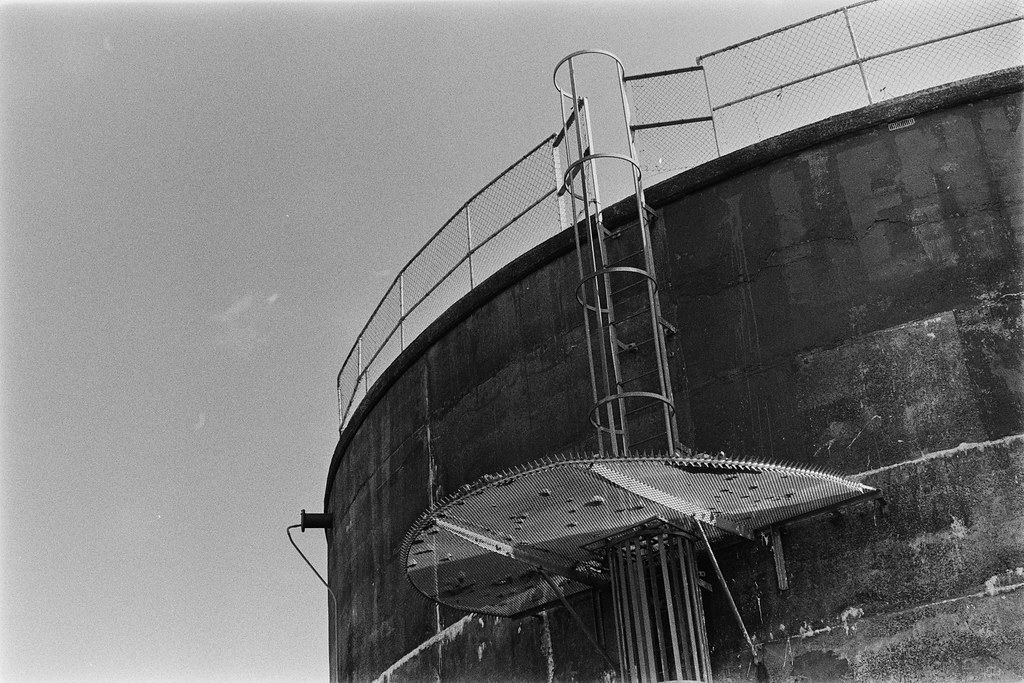 DSC01317 by Andrew Burns, on Flickr
|
|
|
|
Very different negatives after I fixed my shutter speeds (all speeds were 1.5 to 2x faster than they were supposed to be). Shot on Kosmo Foto Mono (rebadged Fomapan 100), developed in rodinal.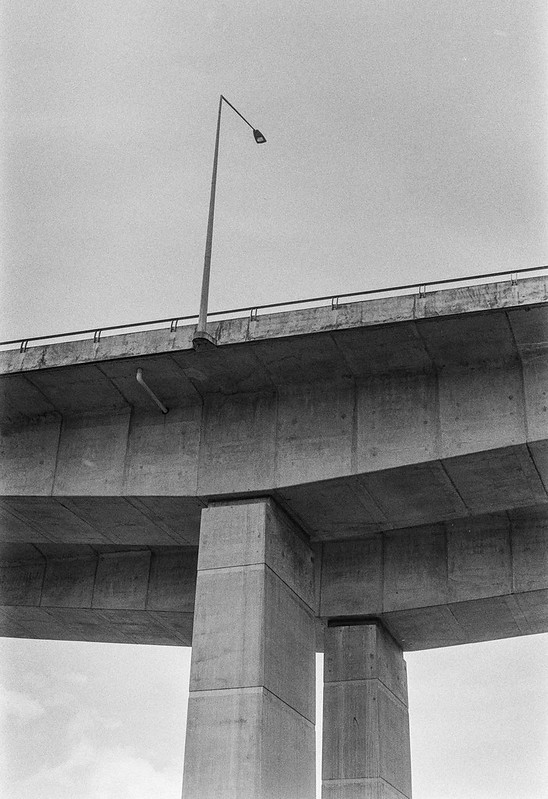 DSC01379 by Andrew Burns, on Flickr  DSC01358 by Andrew Burns, on Flickr
|
|
|
|
I had a roll of fomapan 400 with a mix of bright daylight photos and pitch black night photos and I was worried about how they'd go with standard development, so I tried a semi-stand develop. 1 hour in 1+100 rodinal with ~5 inversions at 30 minutes. Actually turned out really well IMO, I'd heard horror stories about muddy neggies and bromide drag but they still came out with plenty of contrast and no strange non-uniformities. Here are some of the pitch black ones, the daylight ones were mostly portraits of people at a work party so not that interesting...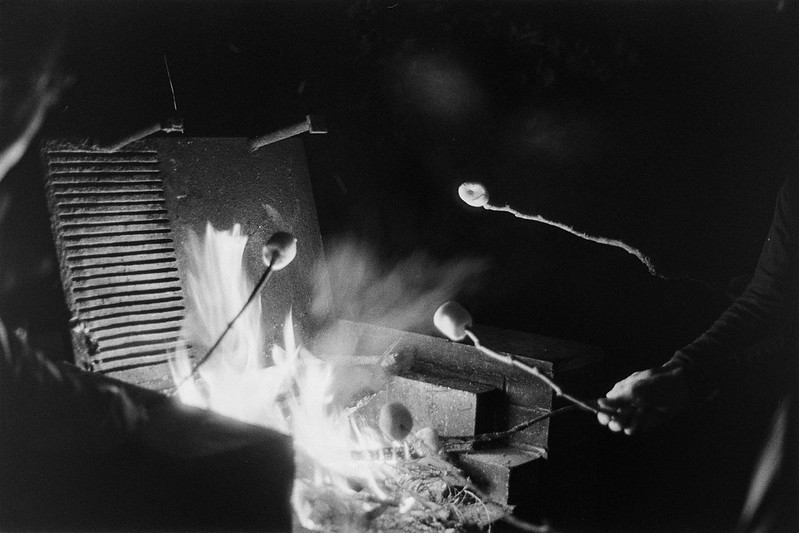 DSC01406 by Andrew Burns, on Flickr  DSC01405 by Andrew Burns, on Flickr (white edges/non-uniform lighting are due to how I'm scanning them, not the negatives themselves)
|
|
|
|
Lankster NZ posted:Finally read through the entirety of this awesome thread, and was inspired so I thought I'd try this film thing out. Sick, you didn't happen to get the trip 35 from Caleb?
|
|
|
|
Lankster NZ posted:Nah from an online shop based here in NZ Hah crazy because I saw a guy on facebook in auckland sell a trip 35 yesterday as well.
|
|
|
|
VelociBacon posted:I honestly think it must take around the same time with the DSLR method. Actually capturing the image is nearly instant but you have to put in a lot of work inverting, correcting colour and removing dust that the scanner typically does automatically. I find it very quick and good for black and white because there's no colour cast to worry about, haven't tried colour film yet but I'm shooting a roll of Portra now to try out (will get it commercially scanned and then see what it takes to make my DSLR scans look the same).
|
|
|
|
Ran my first roll of colour film through the SRT100 (portra 400, shot at 200). My film must have slipped resulting in this unintentional but quite interesting double exposure:  Accidental Success by Andrew Burns, on Flickr 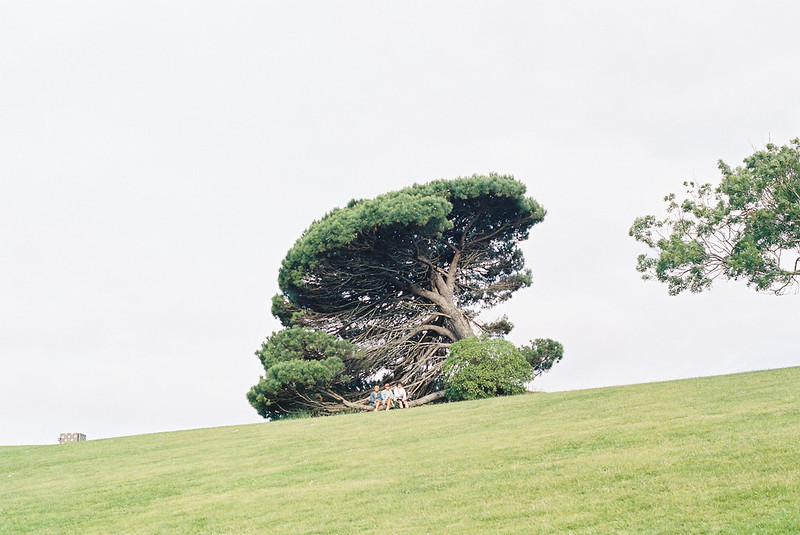 Auckland Domain by Andrew Burns, on Flickr 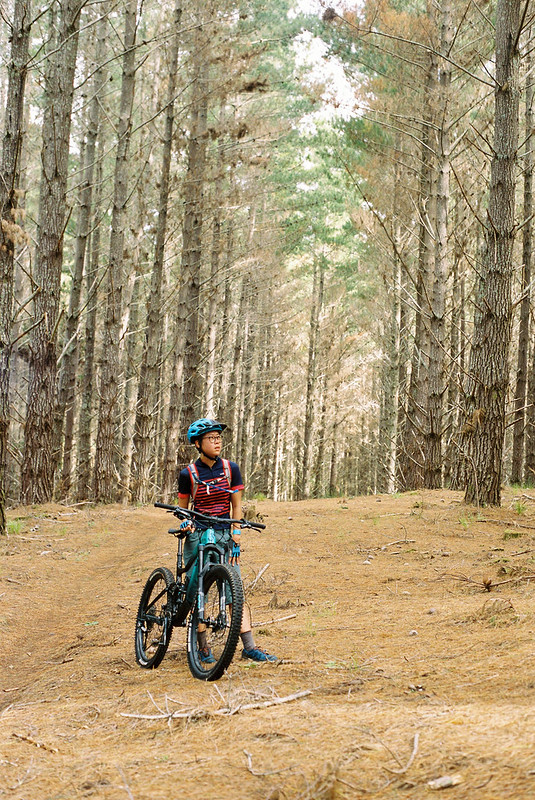 Woodhill Sunday Drive by Andrew Burns, on Flickr
|
|
|
|
Pooper Trooper posted:Shot my first couple rolls of B&W film. You guys weren't joking when you said I'd be better off learning how to develop, scan and print my own films, two different local labs did a mediocre job at best. Plus B&W was actually more expensive to dev, scan and print than color film which pissed me off. Lucklily my girlfriend's christmas gift was a 3-day seminar in all those processes, so come February I should have at least some grasp on what needs to be done. I had never shot film before and I went straight into developing my own B&W film, so far I've tried quite a few different things and I haven't had any disasters. B&W negative film seems to be very forgiving, especially if you're scanning and editing digitally. For my first two rolls my camera's shutter speeds were double what they should have been (since fixed) and the images still turned out just fine, it was just the equivalent of pushing the film one stop which people do intentionally all the time. I develop in Rodinal and I've tried both normal and semi-stand development, both techniques have worked just fine, although again I'm scanning and digitally editing which can correct for more things than if you're trying to directly enlarge. President Beep posted:Gosh, those are some nice looking images. Now that Iíve developed a handful of less expensive drug store C-41 process film without ruining anything I think Iíll try Portra next. Thanks!, to be clear I didn't develop or scan these myself, I had it done by a local lab with a good reputation (which I think is accurate given the results). I'm getting the negatives back from them to give my scanning method a go too, I've only ever done B&W which are much easier to invert than colour.
|
|
|
|
A few shots from a visit to Sydney recently, shot on mixture of Tri-X and Arista EDU 400 pushed to 800 and semi-stand developed in Rodinal.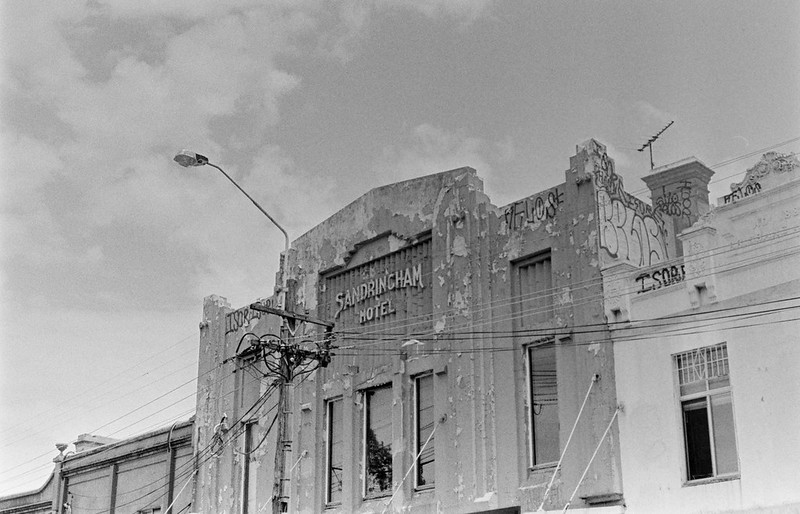 DSC01449 by Andrew Burns, on Flickr 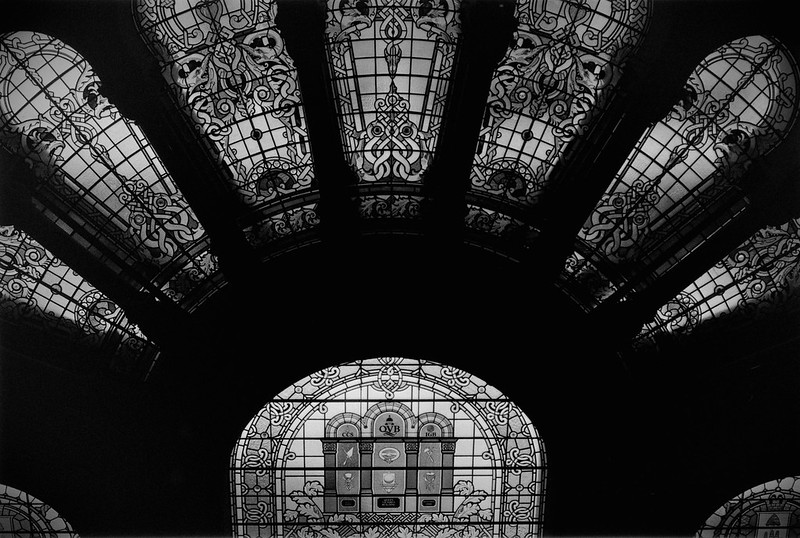 DSC01499 by Andrew Burns, on Flickr  DSC01450 by Andrew Burns, on Flickr  DSC01495 by Andrew Burns, on Flickr
|
|
|
|
Primo Itch posted:Got to say that for a so-called "Budget film", I'm really digging the Ilford Pan 400 can I got in Buenos Aires... Good classical look with a nice round grain and good sensitivity all around the colour range. I'll have to do some experimentation with pushing now, but overall quite happy. Liking these two in particular.
|
|
|
|
Some sort of lens flare or reflection? The circular marks appear to be centred around the light source to the left of frame.
|
|
|
|
Sauer posted:Was HP5 that did it this time. I'm going to guess it this phenomena. My only film developing experiences so far have been tri-x and fomapan/arista edu in 35mm. The fomapan dries totally flat while tri-x has a slight curl, doesn't really make it any harder to scan though.
|
|
|
|
Eurgh just had a pretty lovely experience loading 35mm onto a plastic spool in the dark bag. I've done it ~8 times so far and every time until now it's gone really easily but this time it just refused to feed, jammed, dog-eared etc. It was also quite warm so the bag got sweaty etc. Lost a few frames I think but the rest look OK, I also had the film slip twice it seems because I have two overlapped exposures on the roll.
|
|
|
|
Just frustrating that loading the reel has literally been the easiest thing right up until now, either it's getting a little sticky or it was just the heat/sweat.   
|
|
|
|
Anybody have any experience with intentional double exposures? I'm trying some on my SRT-100 using the rewind knob and button hack to hold the film in one place between shots which seems to be working ok. So far I've been trying direct overlays of images and textures and using pieces of tape to mask off half the lens at a time to glue two frames together split along the middle. The problem with the second technique is because the tape is so far in front of the film I think the split between the frames will be quite blurry but I don't see how I can do much about that.
|
|
|
|
Helen Highwater posted:I've done a few. It's kinda fun to try and plan it. Some cameras have a button to let you cock the shutter without winding on for deliberate double exposures, otherwise, disengaging the sprocket while you wind on works just fine. I don;t know about the tape over the lens trick though, I think it would probably work better if you had a piece of card inside the body over the shutter. This would obviously require taking the lens off between shots. Awesome shots! Even some tape on the rear element of the lens would probably work much better. Maybe I can 3D print a rotating blocker of some kind that I can clip onto the rear element...
|
|
|
|
Sauer posted:Negative Lab Pro did this with your scan: That came out really well... Also in other news I got myself a voigtlander bessa R3A and 40mm f1.4 nokton a few days ago. Ran a roll of fomapan 400 through it today, all in aperture priority at box speed but unfortunately it ended up a bit underexposed, I think because generally speaking foma 400 is better shot around 200 depending on how the camera meters. I really love the 1:1 viewfinder, I think the 40mm framelines are way too close to the edge of the viewfinder but you get used to it. I found the rangefinder fairly OK to use (all of my shots ended up in focus anyway) but either my eye alignment to the finder is a bit off or there's a slight vertical misalignment to the patch, nothing terrible though. Shutter makes a cool snap, advance lever feels really solid and smooth etc. A few sample shots:  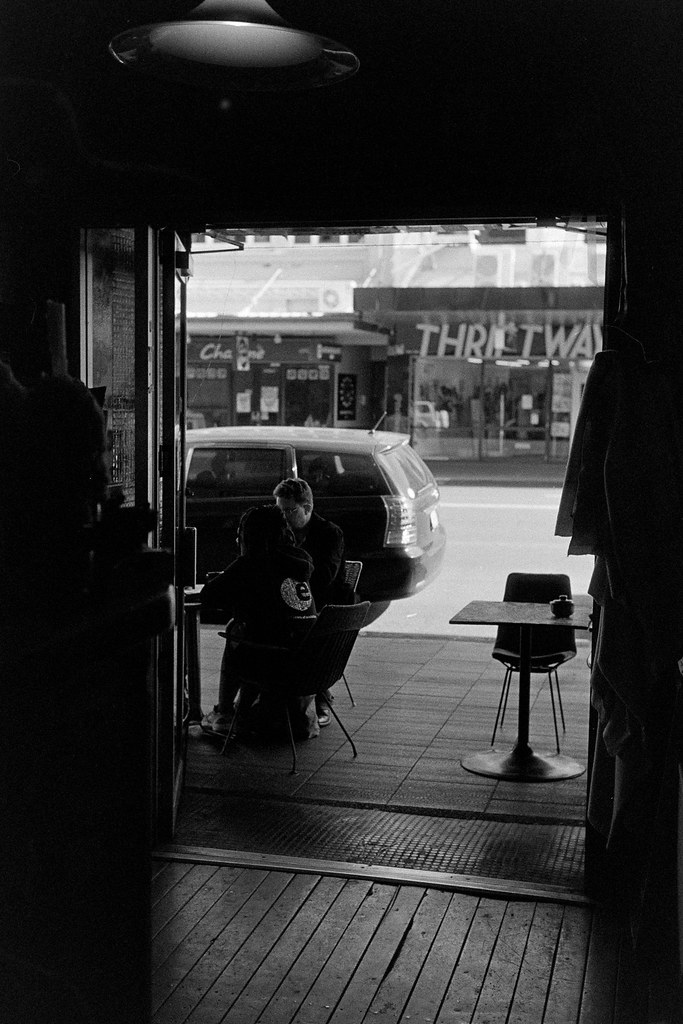
|
|
|
|
Eeeeyy processed the roll of film I was using to try out a bunch of experimental double exposure techniques and I'm quite pleased with the results. Also pleased with the combination of Ilford FP4+ and Rodinal stand develop, the neggies scanned great and required hardly any editing.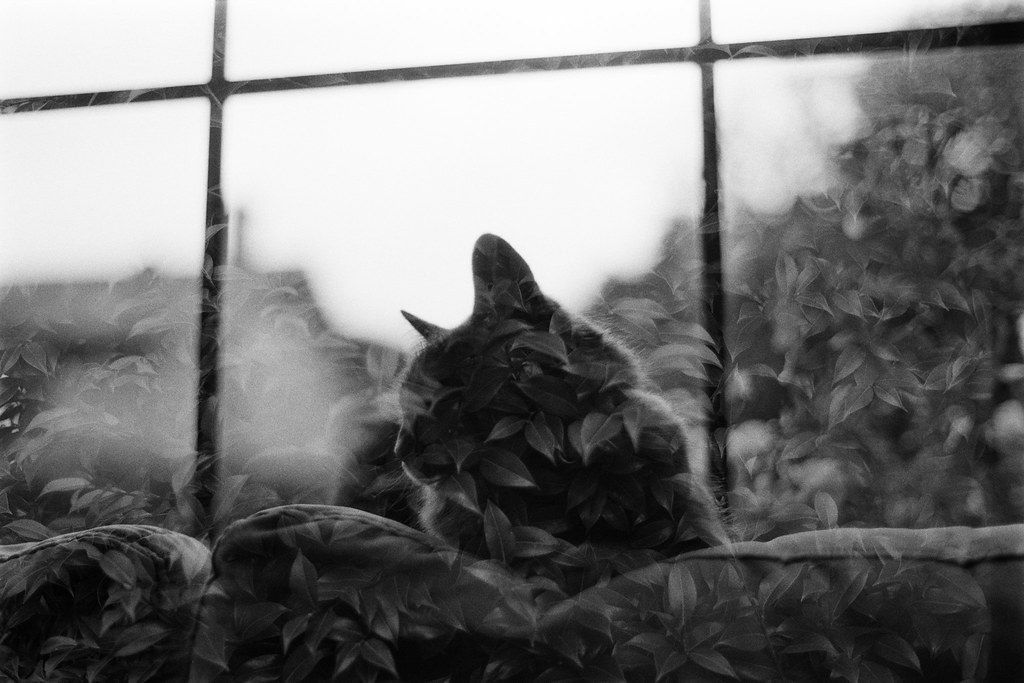 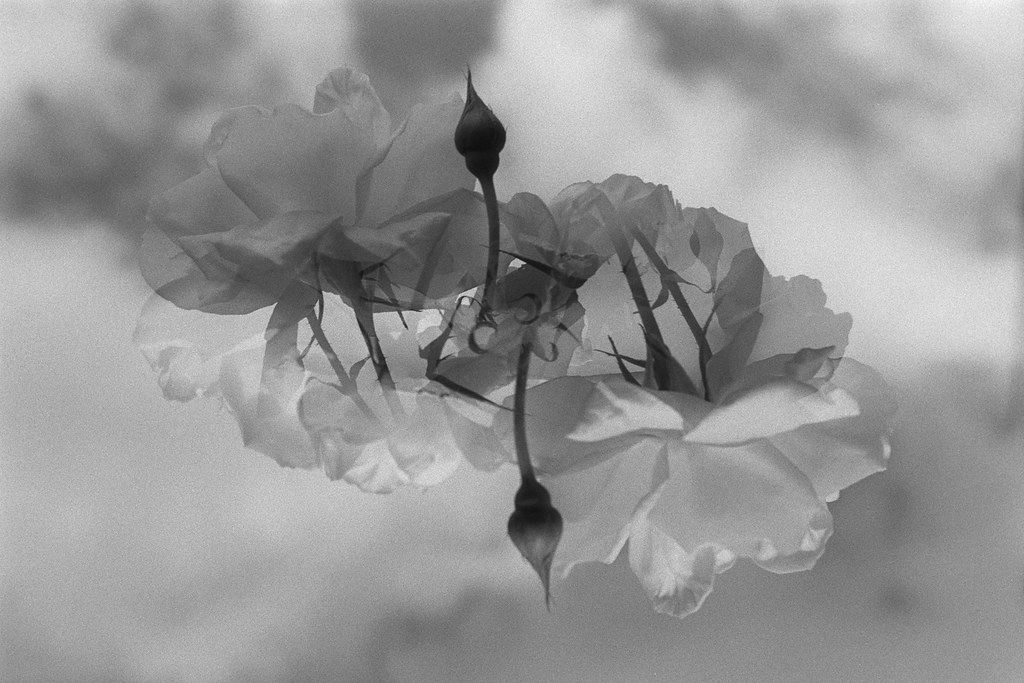 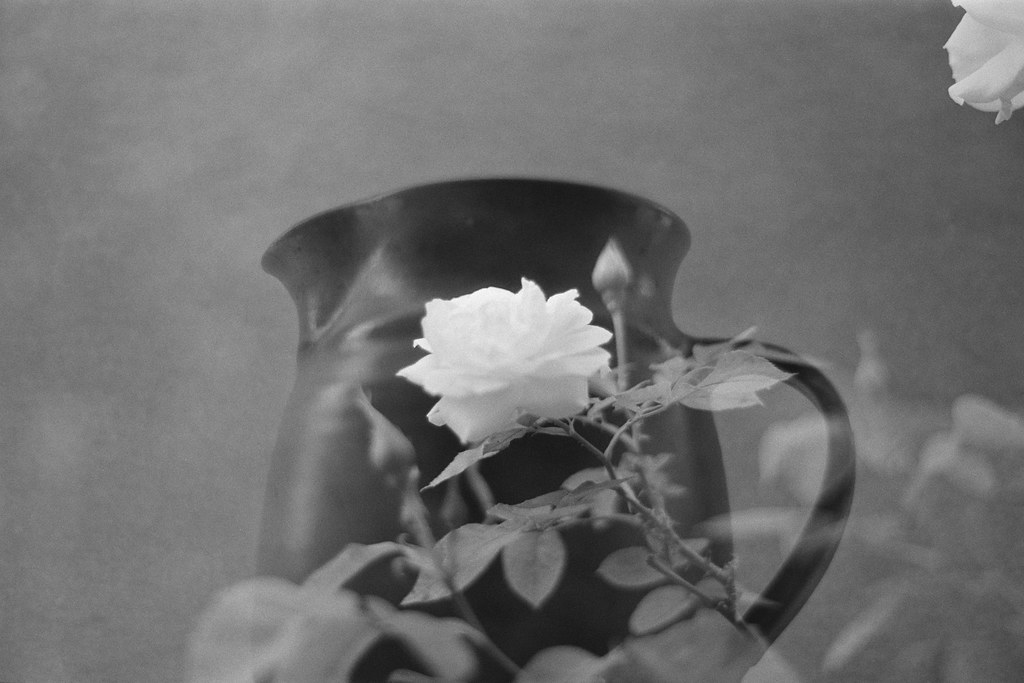 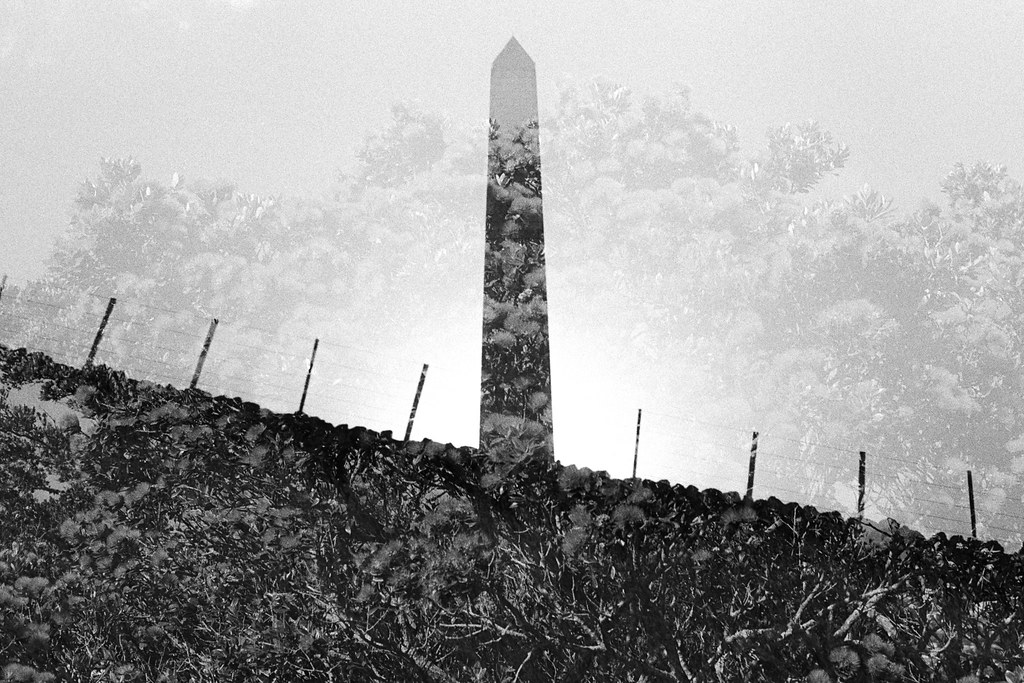
|
|
|
|
Hocus Pocus posted:Those are really cool! Of the techniques you experimented with, was there one in particular that stood out? Cheers! Nothing that stood out in particular however it's pretty clear that they all rely on having perfect lighting conditions. Compare for example the cat image (which I really like) and the obelisk with fence line. The cat works really well because you have completely blown out highlights in the window, while the obelisk doesn't work so well (IMO) because the sky isn't completely blown out and you still get a ghost of the tree that I was overlaying. In retrospect I had a red filter on when taking a photo of the obelisk which made the sky darker, I'm thinking that in the future I need to use a blue filter for that kind of shot to further increase the contrast between the object and background. Basically the whole thing works on the negative being subtractive of light when inverted (highlights on the negative 'take away' from light passing through the negative when printing, which is analogous to inverting in lightroom) so the technique works best when you have an area of the image with apparently no overlay and an area with overlay (typically a dark silhouette which is filled with some kind of pattern). On the negative the highlights are dark and they can only get so black, so if you blow the highlights out those will be your areas with no overlay and the shadows will still show the overlays as they're clear on the neg. So you need a strongly backlight subject with enough dynamic range between light and dark to let you completely blow the highlights if you want a good image, which I imagine would be much easier to engineer with studio lighting.
|
|
|
|
This guy makes C-41 development and shooting with cine film seem super easy: https://www.youtube.com/watch?v=osIYS7mayEE Thoughts? I've heard a lot about how temperature dependent C-41 is etc. But now I'm thinking of giving it a go.
|
|
|
|
Cheers I'll give it a crack. Also I actually really like Ektar! Silly saturation and all, the skin tones are erring on too read though and I think I over-exposed (or maybe it happened in the scan). 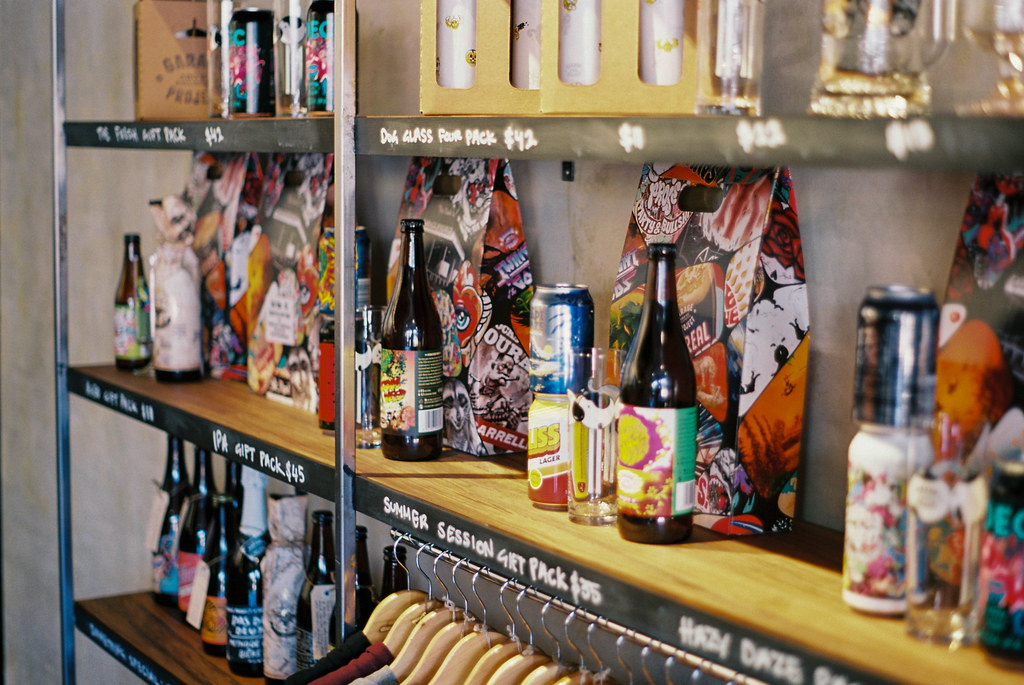  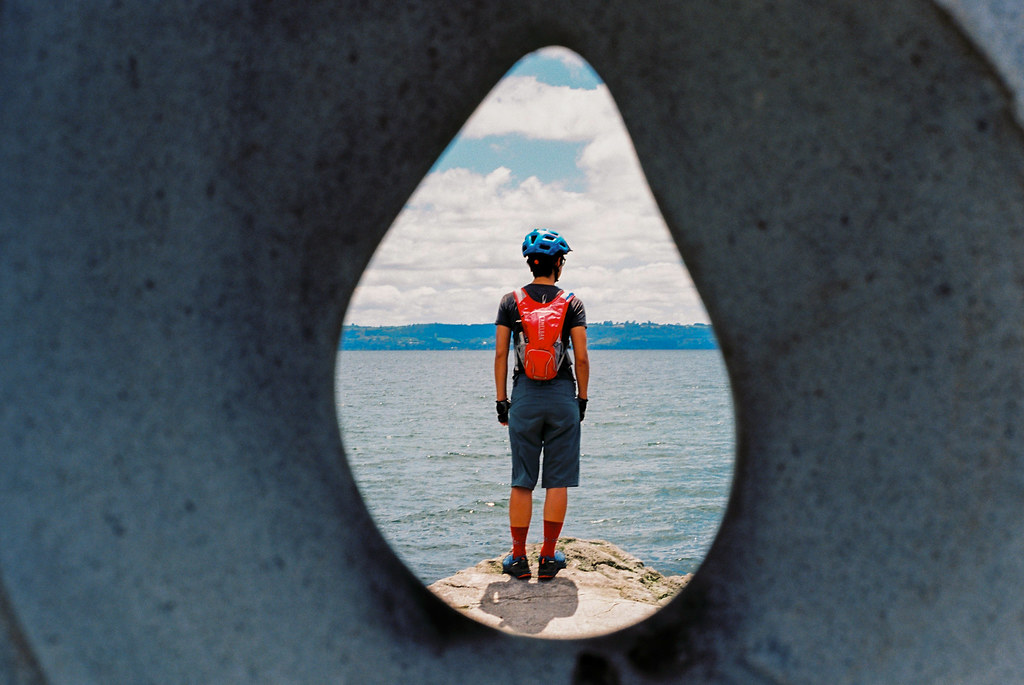 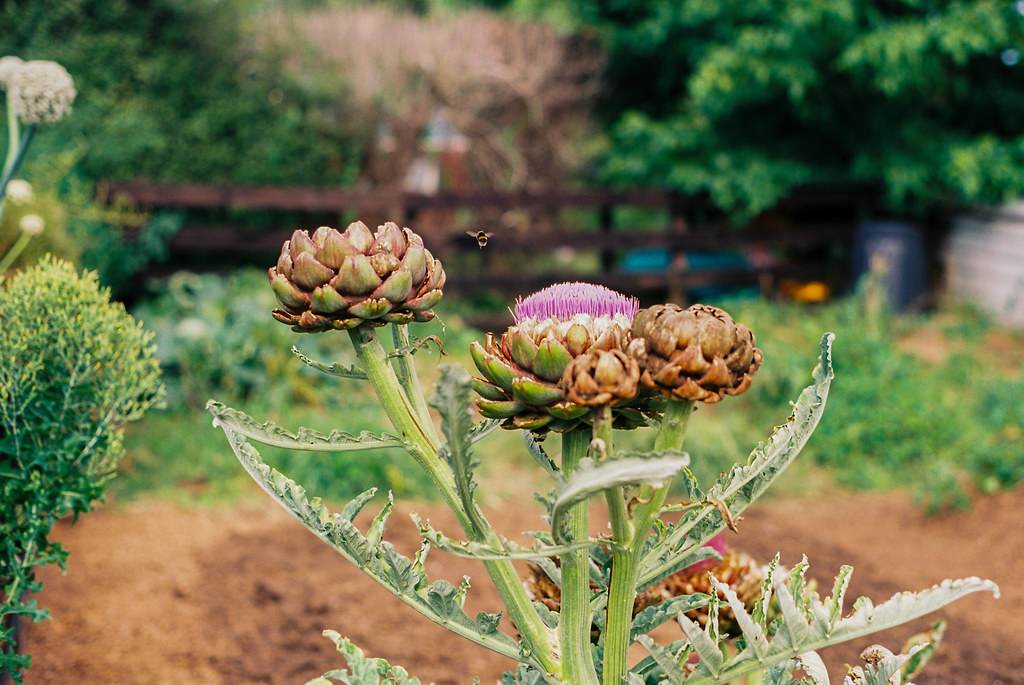
|
|
|
|
ansel autisms posted:Cinestill is garbage Do you mean the particular offerings under the brand 'Cinestill' or photography using cine film in general?
|
|
|
|
Wild EEPROM posted:halation is the new acceleration Which makes sense as a gripe against Cinestill film where they strip the remjet off but if you're processing cine film at home you leave the remjet on until process so you retain the anti-halation layer. Also drat I want an X-PAN....
|
|
|
|
Some cinestill 50D, have to say I'm not sold on it at all for landscapes, most of them turned out pretty poor colour-wise (but that may not be the fault of the film I guess?) 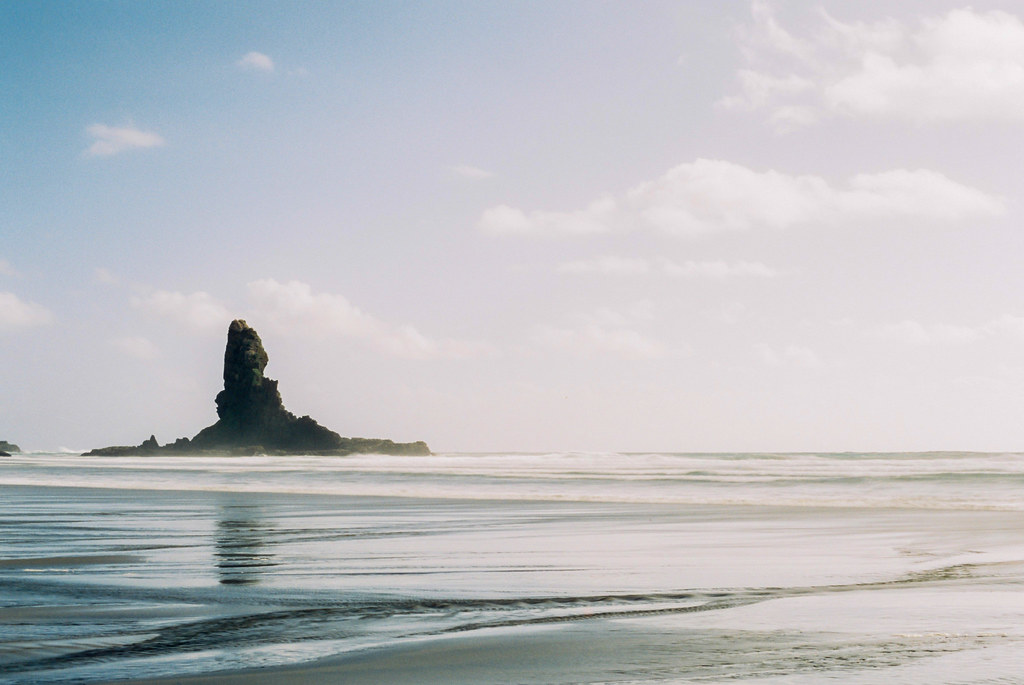 
|
|
|
|
Also a mix of Tri-X at 1600 (which is just way too contrasty for me, at least in Rodinal) and FP4+ which I actually quite like.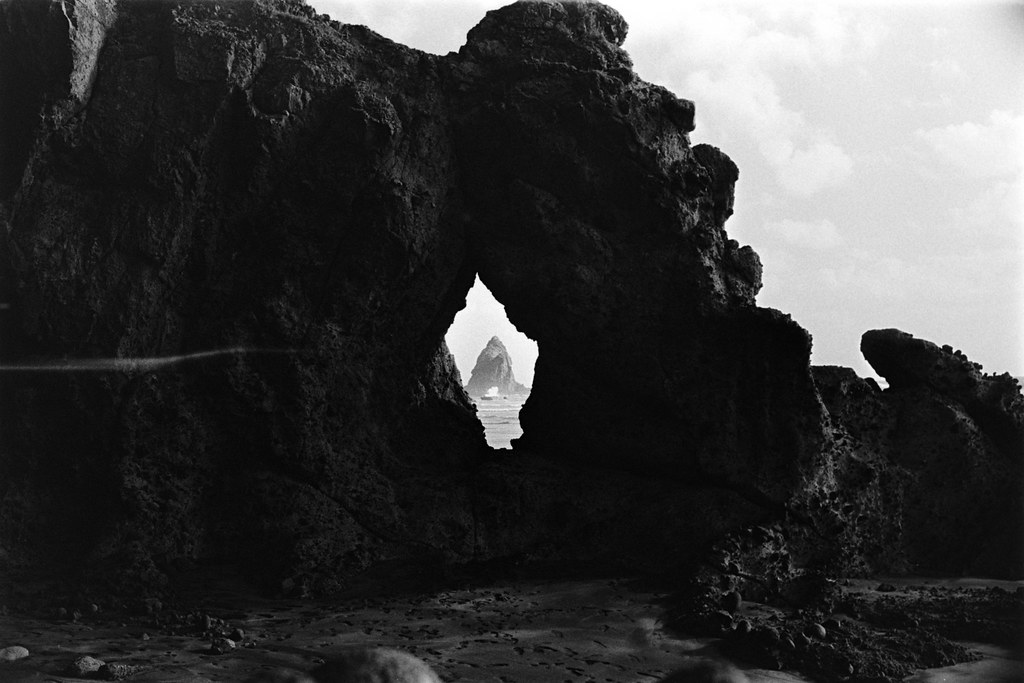  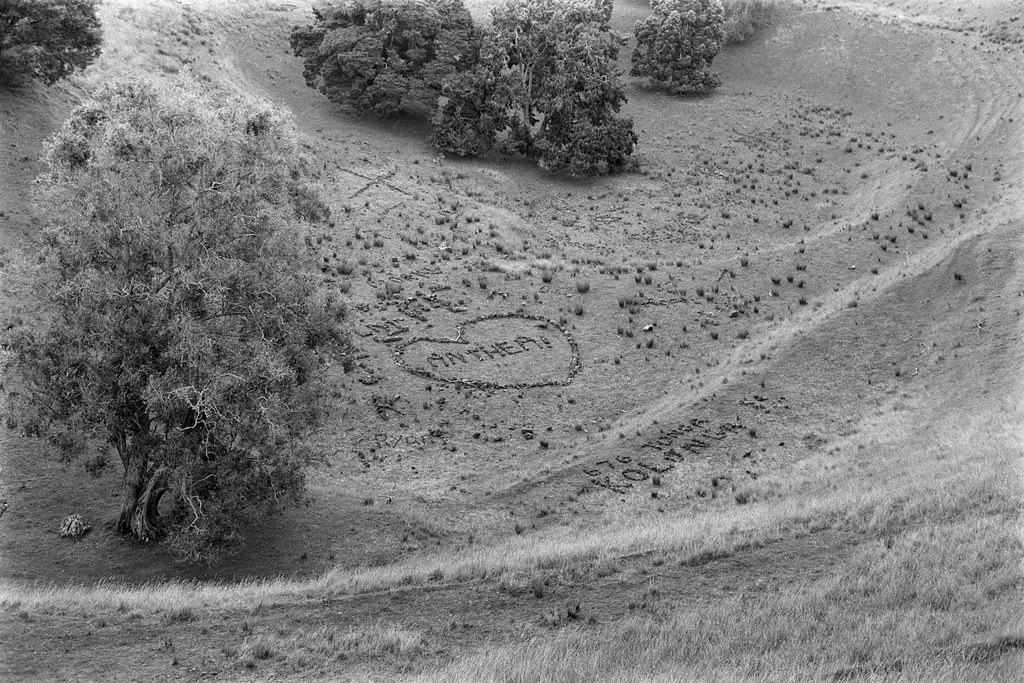
|
|
|
|
Just ordered a bulk loader, 100ft of kodak vision3 250D and a C-41 dev kit ahhhhhh.
|
|
|
|
ansel autisms posted:Seriously what's making you do that instead of just shooting Portra 400, nearly the same film Mostly price (a roll of Portra is ~$18 here, and another ~$25 to develop and scan) but I also find it interesting, I love film for the alchemy aspect of it and like to fiddle with things. If I could have found a bulk roll of normal still colour film I would have bought that instead but that doesn't seem to be a thing that is produced anymore. I haven't noticed any super strong colour shifts in the example pictures I've seen online from people developing in C-41, obviously if you're shooting tungsten balanced film in daylight everything will be blue... I've seen varying degrees of praise and condemnation for using cine film but I've liked the example images I've seen in most cases so eh? Worth a shot. I'll be sure to tell any tales of misery I have in here for laughs if/when they happen.
|
|
|
|
New Zealand, about as far away from anywhere as you can get in some respects. Also those prices are in NZD but wages are lower over here so I think it's comparable. Small population means film is very niech and places have to charge a lot more due to the low volumes.
|
|
|
|

|
| # ¿ Apr 27, 2024 23:05 |
|
Negative lab pro plug in for lightroom seems to do a good job inverting colour neggies.
|
|
|



